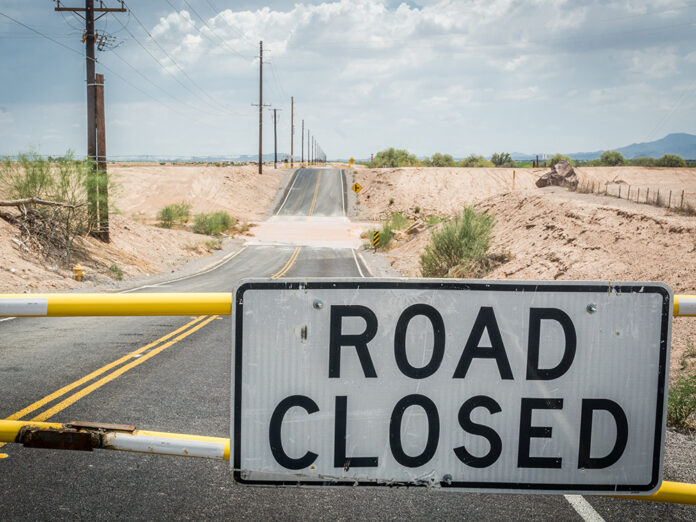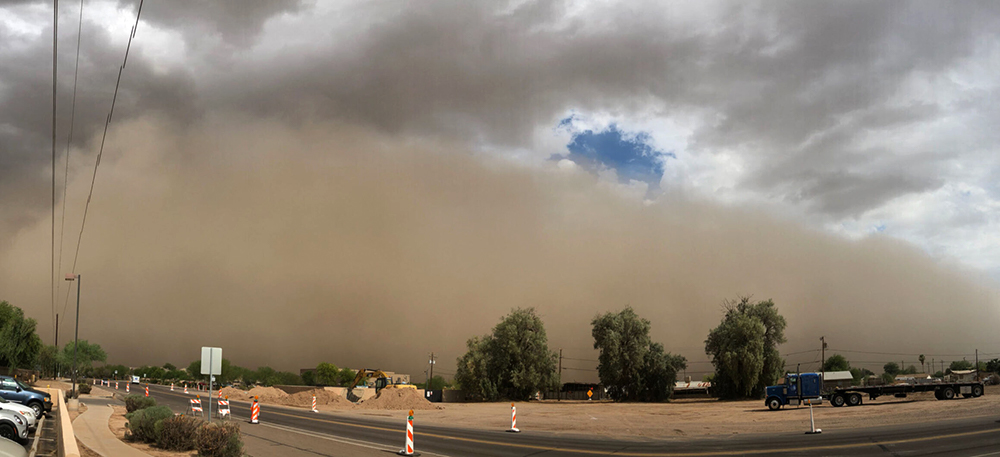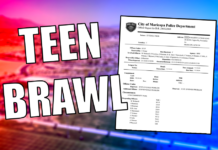
Monsoon season is officially upon us, and for those new to the area there are several things to know about how to best deal with the unique desert storms that can roll through the region at this time of year.
What is the “monsoon”?
The term refers to the wind shift seen during the summer months that draws moisture to a typically dry area. When prevailing, or strongest, winds change direction, tropical moisture is drawn to the north from Mexico, creating conditions favorable for isolated thunderstorms that can be intense.
Fueled by daytime heat, thunderstorms typically build during the late afternoon and early evening hours and dissipate during the night when temperatures cool. The cycle often begins again the next day, giving the area its predictable monsoon patterns.
In 2008, the National Weather Service designated monsoon season as June 15-Sept. 30 to increase awareness of the dangers of such storms.
A March precipitation outlook by the weather service’s Climate Prediction Center found most of the state has an above-average chance of getting higher-than-normal amounts of rain this summer. Monsoon storms typically don’t arrive until mid-July.
The Maricopa Fire/Medical Department offers a few simple safety practices and local resources to help residents minimize those potential dangers. Thunderstorms and their high winds can kick up towering walls of dust known as “haboobs.” Storms can produce locally heavy rains and flash flooding. All of these effects can cause property damage, injuries and even loss of life.
Sometimes towering thousands of feet into the sky, an Arizona haboob is an impressive sight (see video at bottom of this story). But there is potential danger lurking in the beauty of the storm clouds. Dominating the landscape, they can move quickly across the Valley floor and reduce driving visibility to near zero in a matter of seconds. MFMD strongly advises residents to follow these safe driving tips to avoid trouble in a haboob:
- Pull your vehicle off of the road, as far to the right as possible
- Put the vehicle in “park,” turn OFF your headlights and take your foot off the brake
- Make sure everyone remains seated in the vehicle with seatbelts fastened
- Wait for safe conditions to return before driving again
Chris Bolinger, the deputy chief of operations for MFMD, said although it might seem counterintuitive, drivers should not turn on their emergency flashers after pulling off the road.
“It can lead to a situation where someone sees those lights and believes that’s the car to follow to safety, and it can lead to a rear-end accident,” he cautioned.
The heavy rains produced by the thunderstorms that frequently follow a haboob can create roadway hazards as well. Sudden decreases in visibility and hydroplaning are two of the major threats to driving safety produced by downpours, according to MFMD. A few precautions can minimize the risk of driving in stormy conditions including:
- Inspect your windshield wipers and tires, replace them if necessary
- Turn your headlights ON when driving
- Reduce your speed
- Increase the distance between you and the vehicle in front of you
- Ease your foot off of the gas if you begin hydroplaning.
- Avoid sudden braking

In addition to poor driving conditions, monsoon rains can cause flooding in low-lying areas. MFMD urges residents not to cross flooded washes, even if the water doesn’t look deep or fast.
“Just six inches of water moving a few miles an hour can move a car,” Bolinger said. “Even if you see the car in front of you cross a street or wash that has water flowing in it, the best bet is not to risk it – just turn around. You just can’t predict what the water will do to a car in those situations.”
Flooding in residential areas can pose a significant risk of property damage. In response to this possibility, MFMD will soon offer sandbag fill areas and free sand at its fire stations. On-duty fire crews will provide residents with up to five sandbags on request, but shovels will not be provided. For residents filling their own sandbags, MFMD recommends filling them halfway to allow them to sit properly on top of one another and create a better barrier.
Another potential haboob-related hazard is power outages. According to its customer newsletter, Electrical District No. 3 crews respond to an average of 103 outages per year during monsoon season. In light of that, ED3 recommends customers be prepared for an outage of up to 72 hours by having the following things on hand at home:
- Non-perishable food items
- Three gallons of water per person
- Portable, battery-operated radio
- Flashlights
- Rechargeable battery banks for mobile devices




![Elena Trails releases home renderings An image of one of 56 elevation renderings submitted to Maricopa's planning department for the Elena Trails subdivison. The developer plans to construct 14 different floor plans, with four elevation styles per plan. [City of Maricopa]](https://www.inmaricopa.com/wp-content/uploads/2024/04/city-041724-elena-trails-rendering-218x150.jpg)

![Affordable apartments planned near ‘Restaurant Row’ A blue square highlights the area of the proposed affordable housing development and "Restaurant Row" sitting south of city hall and the Maricopa Police Department. Preliminary architectural drawings were not yet available. [City of Maricopa]](https://www.inmaricopa.com/wp-content/uploads/2024/04/041724-affordable-housing-project-restaurant-row-218x150.jpg)










![Elena Trails releases home renderings An image of one of 56 elevation renderings submitted to Maricopa's planning department for the Elena Trails subdivison. The developer plans to construct 14 different floor plans, with four elevation styles per plan. [City of Maricopa]](https://www.inmaricopa.com/wp-content/uploads/2024/04/city-041724-elena-trails-rendering-100x70.jpg)